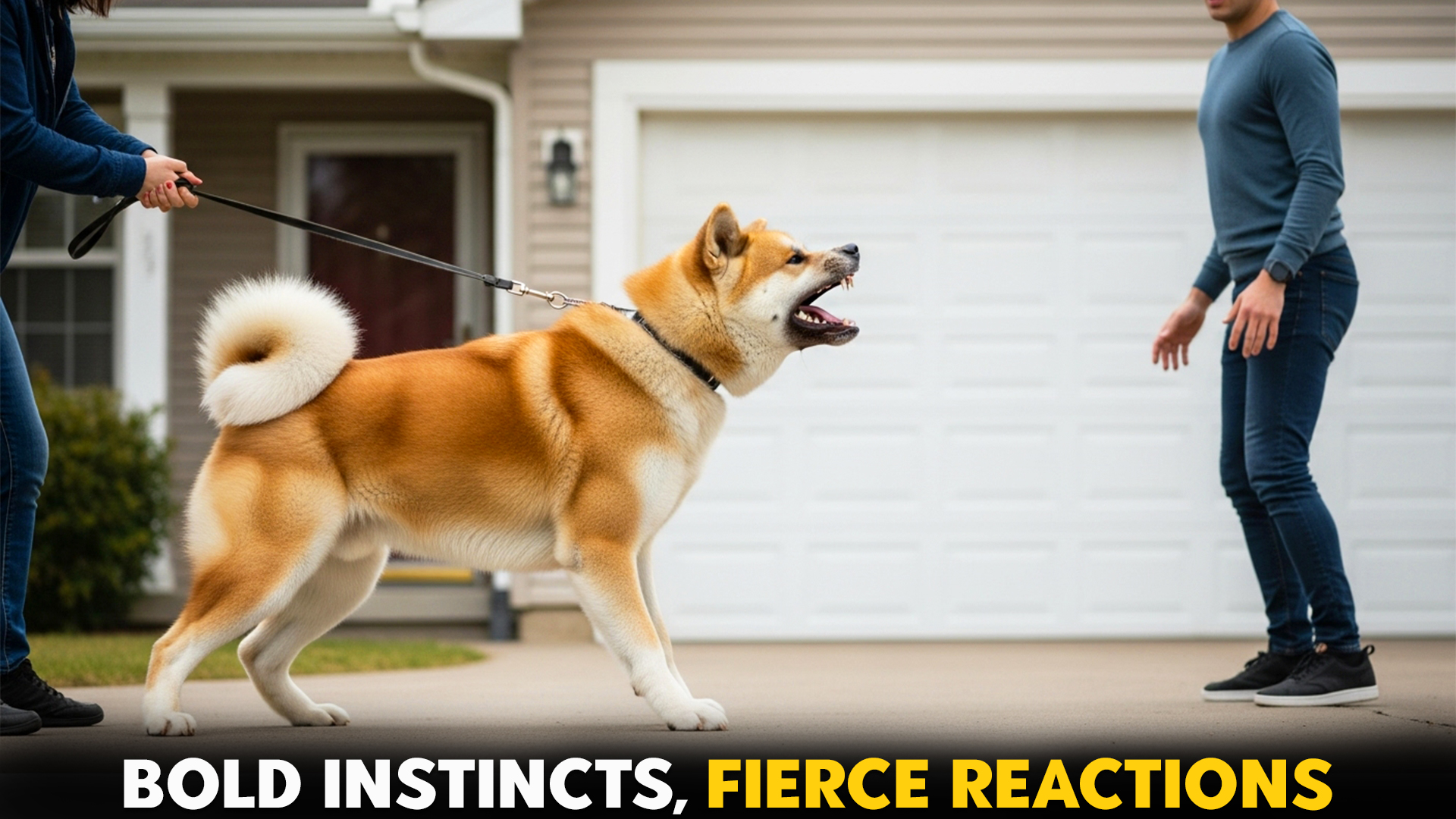Understanding dog aggression towards strangers means understanding and remembering that behavior is not black and white. Some dog breeds by nature are more protective, territorial, and take time trusting new people.
They come off as scary and aggressive, but these are traits that once made them excellent guard dogs or working companions. Nowadays, they’re looked at and misinterpreted as hostility and aggressive behavior.
Since aggressive dog breeds have earned their reputation for being intimidating and scary, and require experienced dog owners. However, their protective instincts aren’t rooted in malice, but it’s a reflection of their loyalty and them being great companion dogs.
Recognizing which breeds are more likely to display aggression towards strangers can help owners take proactive steps like proper socialization, obedience training, and showcasing a consistent leadership role from early puppyhood.
Let’s explore the top dog breeds known for stranger aggression, their “whys,” and know how responsible ownership can make all the difference.
Dog Breeds That Often Display Aggression Towards Strangers
1. Akita

Akitas have a strong protective nature, which means they tend to get triggered easily. They were originally bred to guard homes and families. In Japan, they are honoured as family protectors, as reported by the AKC.
Due to this reason, they often perceive unfamiliar people as intruders, and their internal drive to protect makes them defensive, and they exhibit aggressive behaviour if they sense a threat.
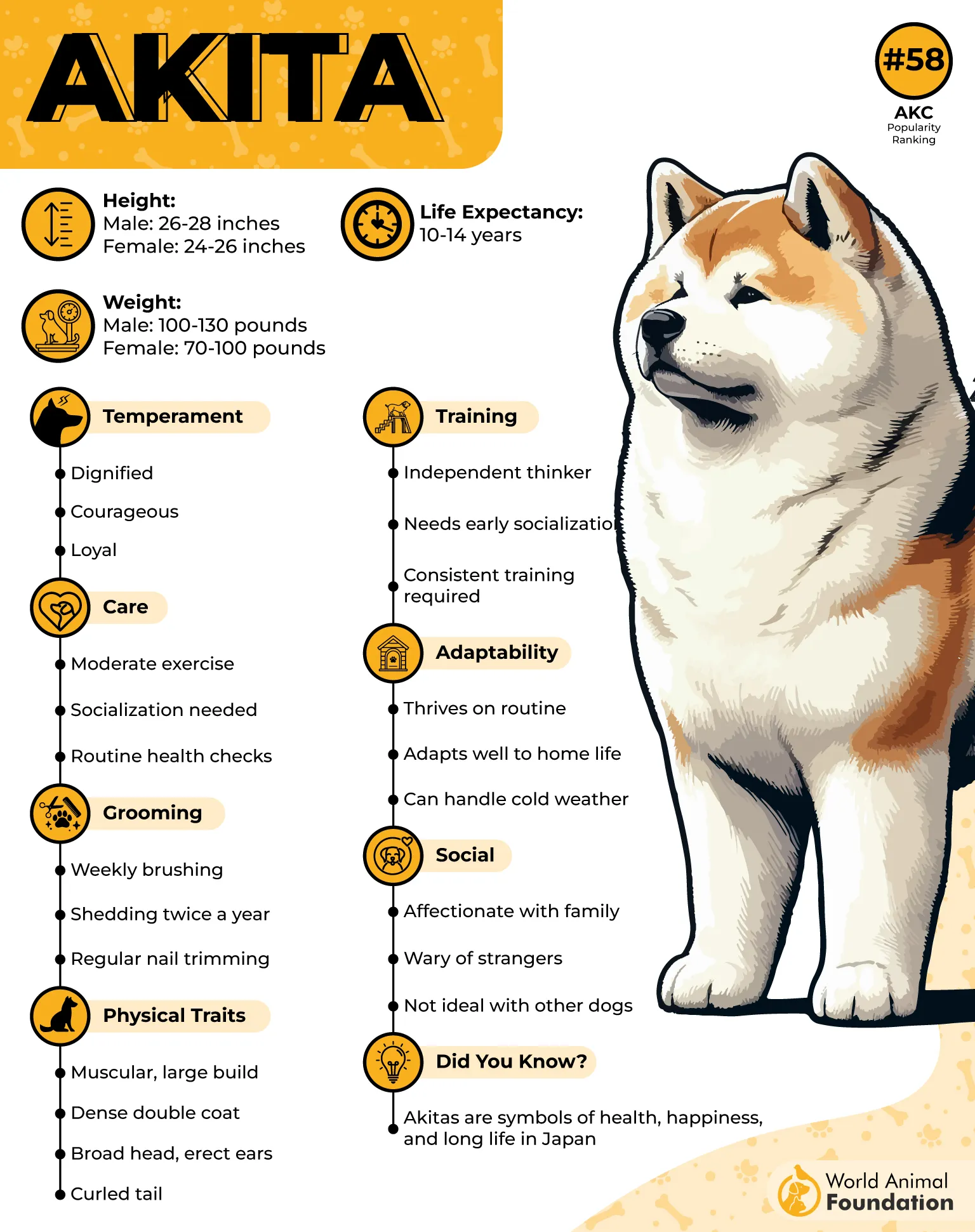
They take some time to warm up to strangers. Hence, the time they take to analyze and look through their suspicions can make them come across as cold or dominant. This is especially true if a stranger approaches their owner a bit too quickly for their liking.
For an Akita, direct eye contact from a stranger means inviting a challenge, i.e., a direct call for encounter. Especially a prolonged one, potentially escalating tension and aggression that already exists.
🎧 Dogcast
Episode 10 — Halloween Special
If you don’t hear sound, tap the button above to enable audio.
2. Chihuahua
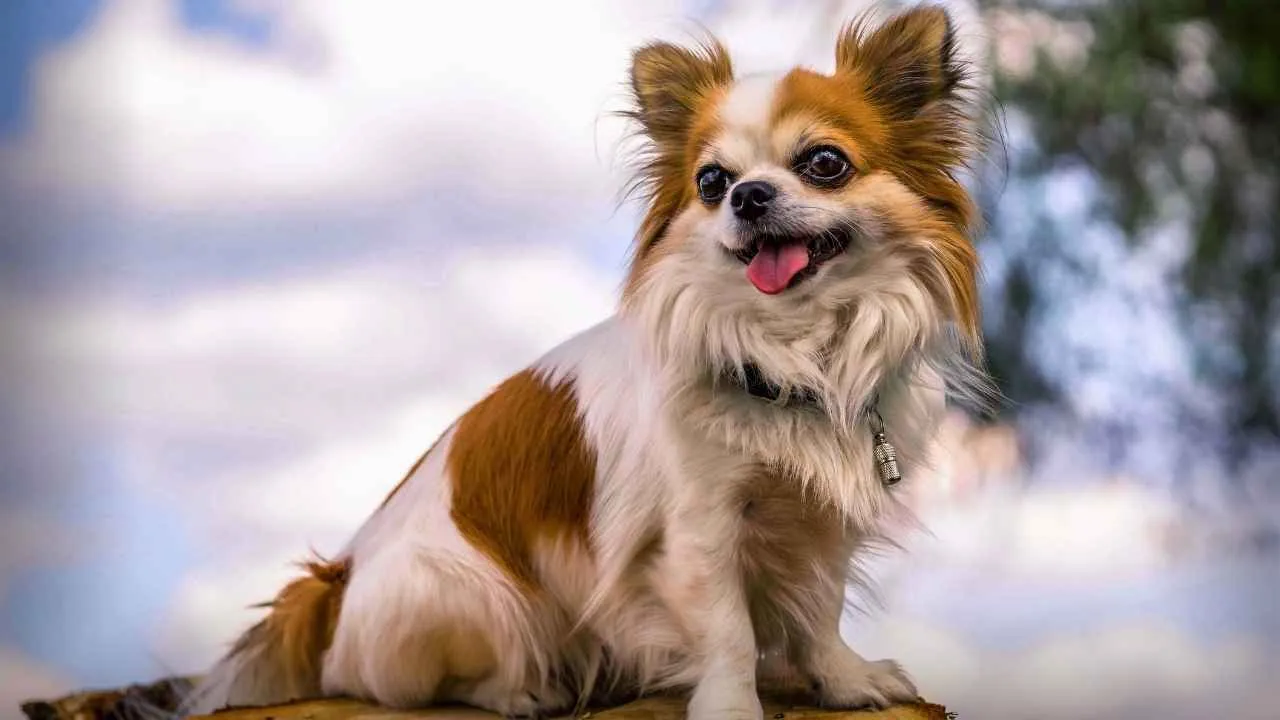
These energetic pups exhibit aggressive behavior because they are protective by nature. Despite being a small dog breed, they have an outsized confidence when they feel threatened by strangers, and they compensate by barking or lunging at the enemy.
Much of their aggressive behavior stems from not dominance, but fear of them being small dogs, meaning being more vulnerable to an attack.
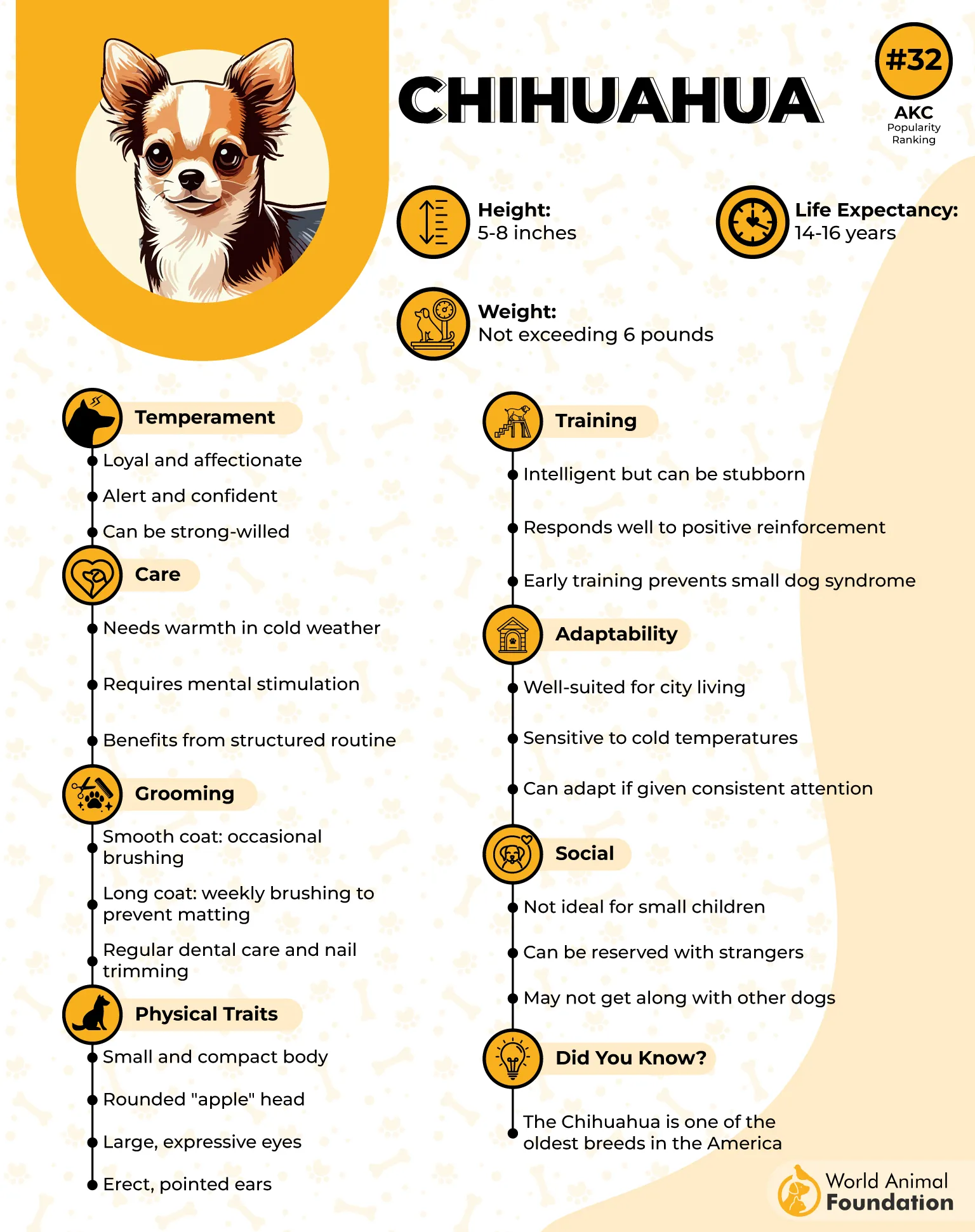
Chihuahuas are alert watchdogs, and any sudden movement or loud noise can trigger a barking fit or a defensive posture. They also form intense bonds with one particular family member and view the rest with a doubtful eye.
Gaps in early socialization can also cause a hurdle in their networking in the future. Calm and consistent training and early socialization are the key to keeping their aggressive tendencies at bay.
Certain breeds are very intuitive. If you’re anxious or defensive around a Chihuahua, remember that they get scared by your energy. They’re really receptive dogs and will tense up around you if they sense you doing the same.
3. Chow Chow
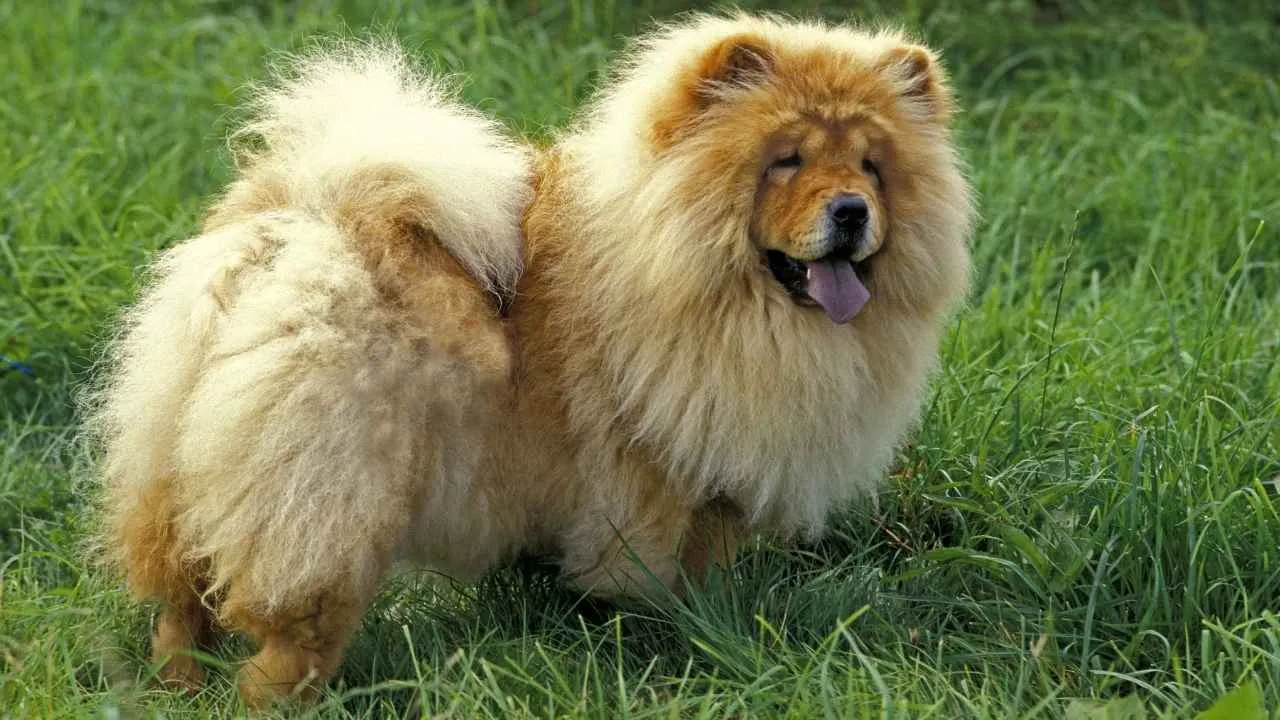
The Chow Chow is a proud and independent breed, known for its lion-like appearance and regal composure. However, that same self-assured nature can make them wary and sometimes aggressive toward strangers if not properly socialized.
The Chow Chow’s protectiveness for their owner is a downside; it turns aggressive really quickly. They are famously aloof and distant and don’t care for affection from strangers. They see unfamiliar people as potential threats.
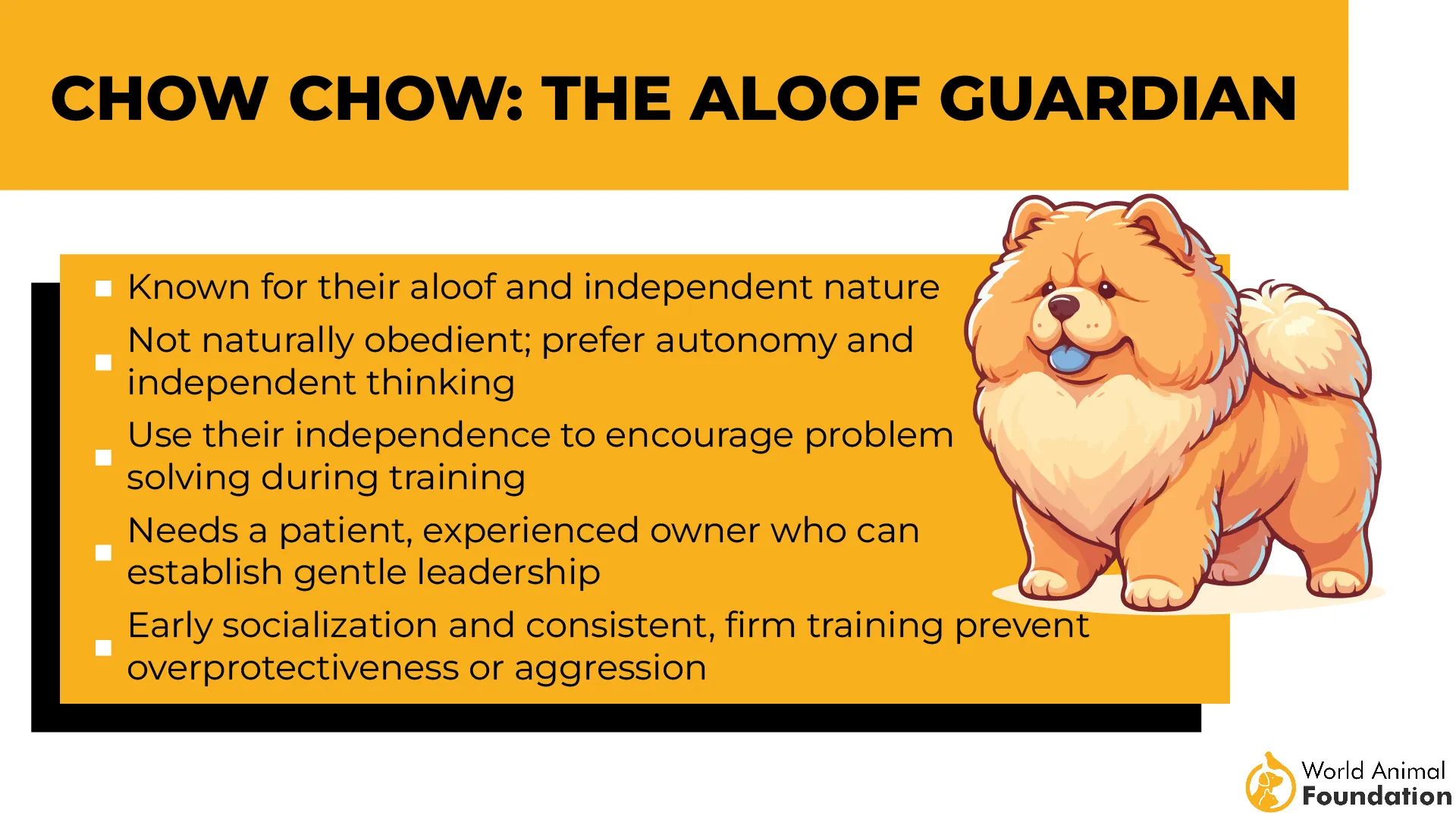
This, coupled with their strong territorial instinct, being originally bred as powerful guard dogs, they tend to become aggressive if a stranger enters their home.
They have a real short tolerance for unfamiliar touch and dislike it coming even as a friendly pat. This is seen as a boundary violation and can lead to severe consequences compared to other dogs. Chow Chows have a dominant personality; they do not like being controlled.
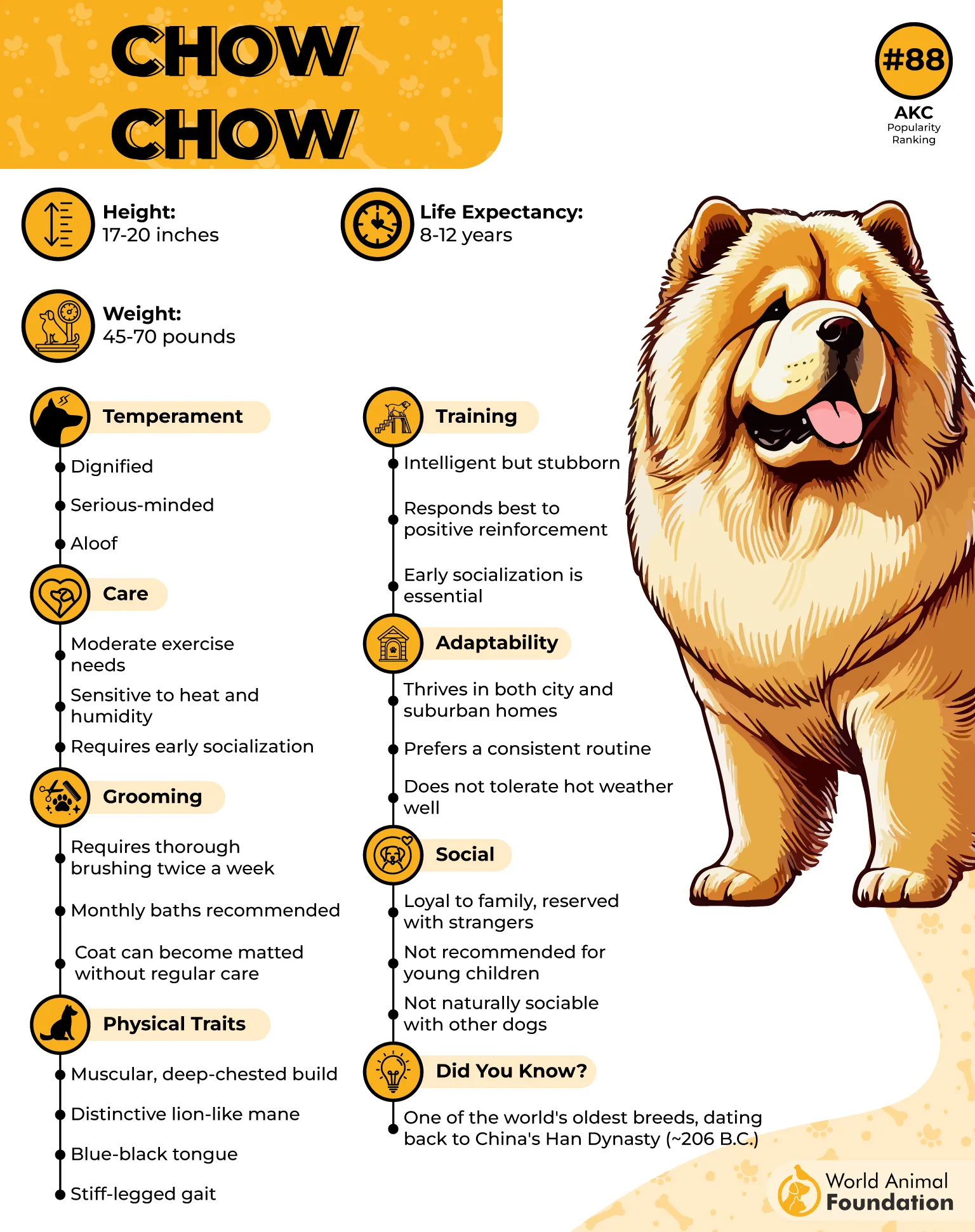
With early socialization, consistent training, and gentle leadership, a Chow Chow can learn to manage its protective instincts gracefully, remaining alert without being reactive. Beneath that aloof exterior lies a loyal companion who simply takes the role of guardian very seriously.
4. Presa Canario
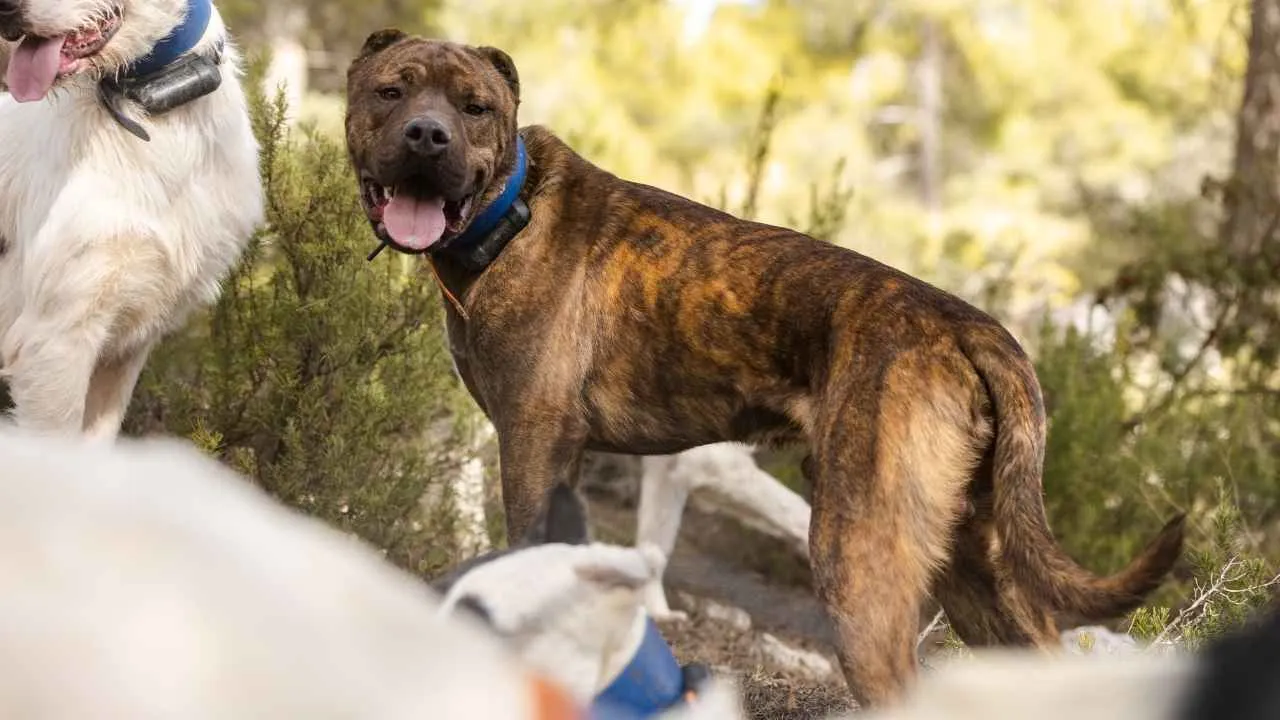
The Presa Canario is a powerful and confident guardian, originally bred to protect livestock and property in the Canary Islands. With their muscular build and calm intensity, they naturally command respect.
They are closely bonded to their owners and are wary of strangers, according to PetMD. These dogs are sensitive to their owners’ emotions. If their owner seems uneasy or uncomfortable around someone, a Presa will perceive that as a threat or danger and feel the need to take action.
They also have low tolerance for strangers who look into their eyes or raise their voice at them. And a sudden move is a death wish.
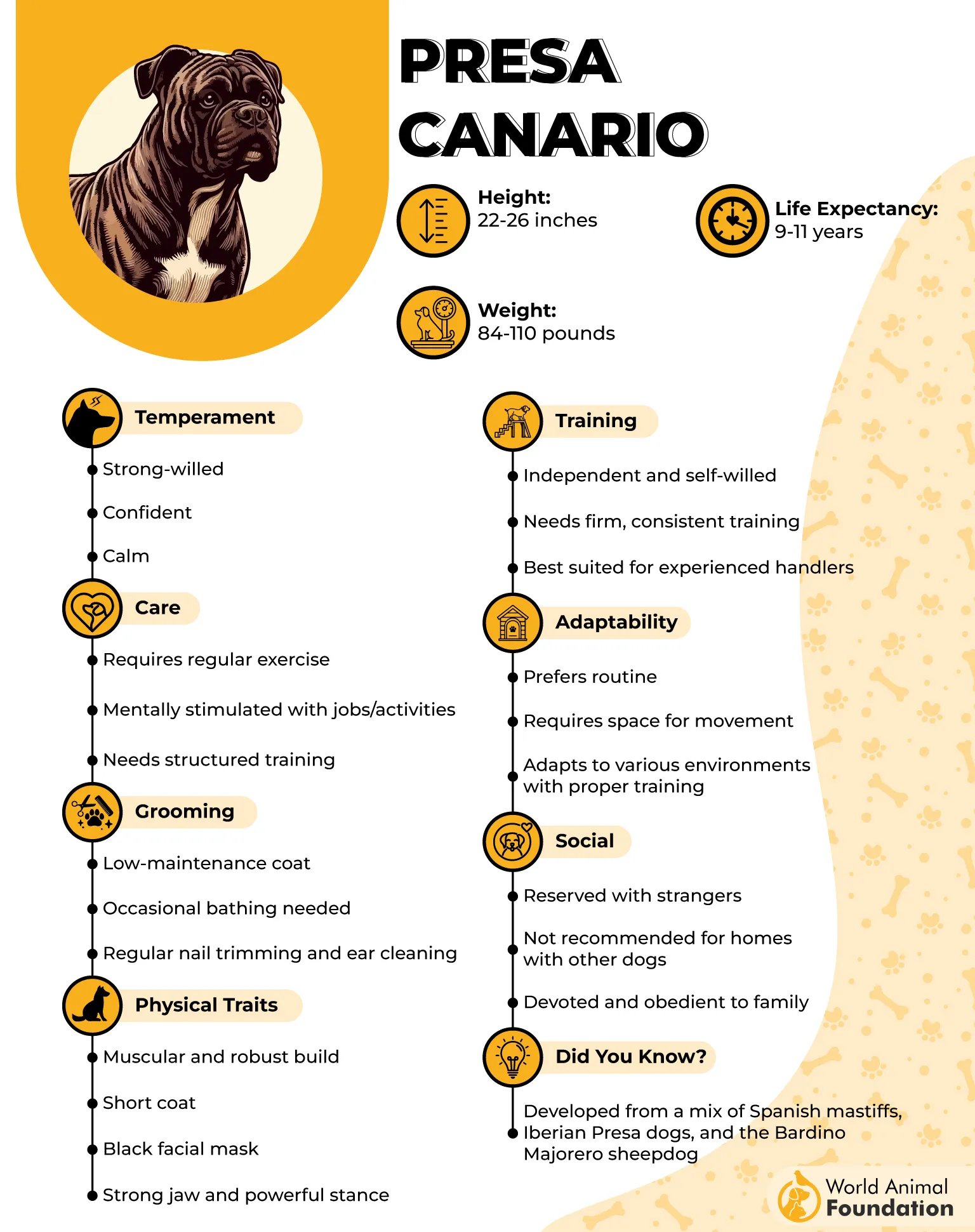
They need to be introduced early on to new people in order for them to be trained properly and understand how to react in unfamiliar, new situations and exposure to new people.
They thrive under experienced handlers who can provide structure, confidence, and leadership. When raised with balance and care, the Presa Canario becomes not just a fierce protector but a composed and dependable companion.
5. Tosa Inu
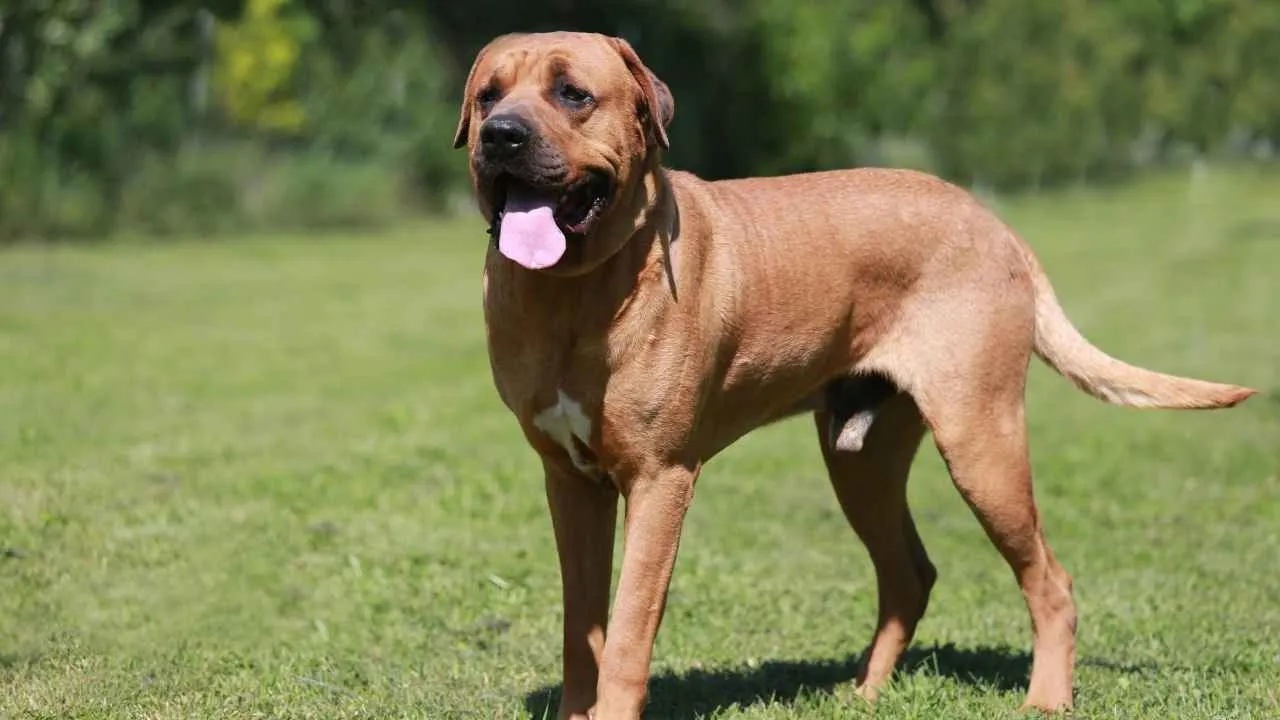
The Tosa Inu is a rare and noble breed from Japan, originally developed for traditional dog fighting but later admired for its calm power and quiet dignity. Beneath its imposing presence lies a dog of deep loyalty and emotional steadiness, one that forms strong, lasting bonds with its family.
Around their own family, these dogs are calm and cool. It’s the strangers and other animals that need to be on the lookout.
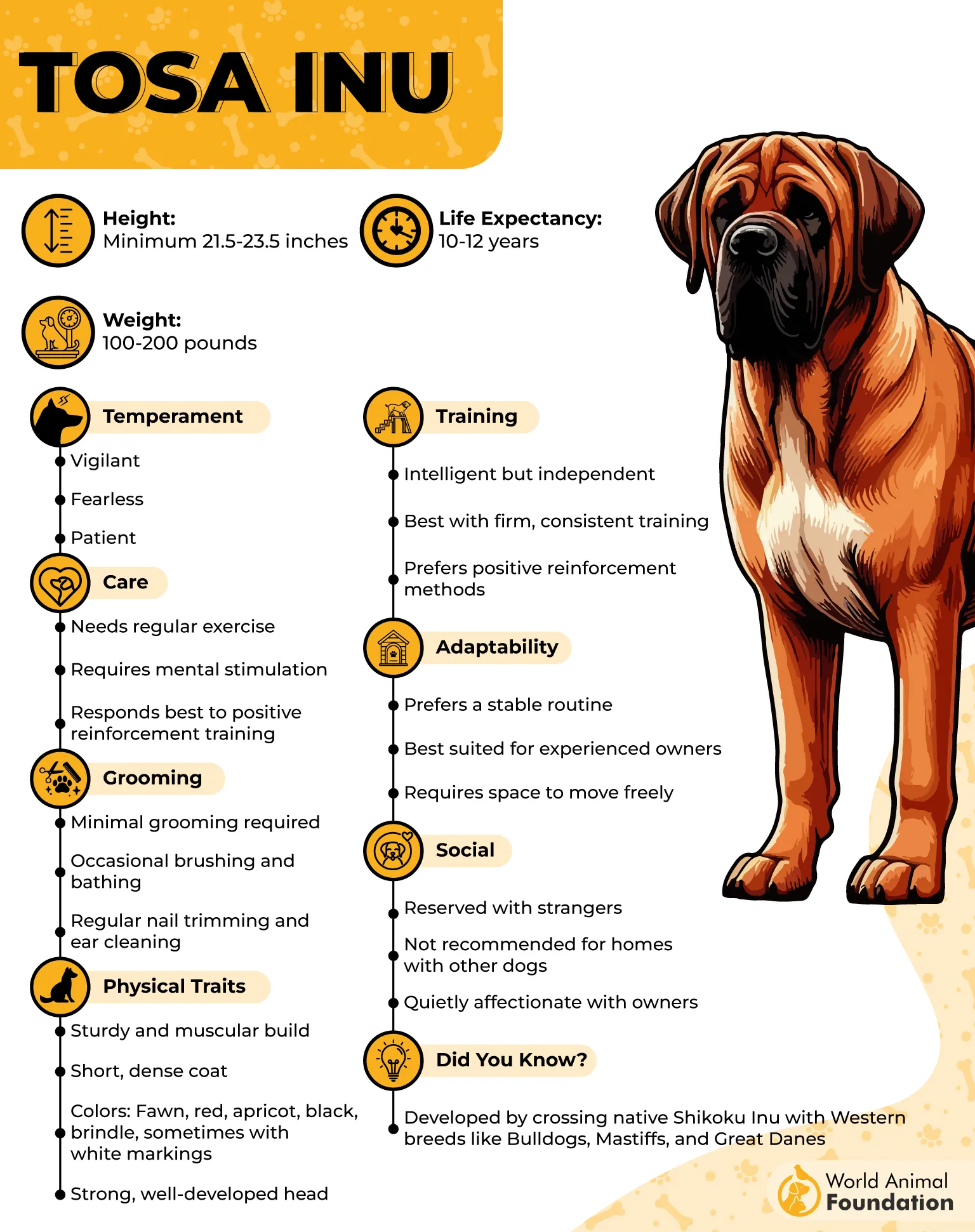
Tosa Inus rarely bark without reason. But when they do bark, it’s sudden, instinctual, and serves as a strong reminder of their fighting heritage. They are elegant dogs with strong guarding instincts.
Showing aggressive behavior is a part of their DNA due to how highly territorial they are. They see their home as a sacred space, so any new entity is looked at as a threat to the sanctity of their space.
They’re not impulsive by nature; instead, they respond to real threats with composed strength. In the right hands, the Tosa Inu is a gentle giant with a noble bearing, devoted to those it loves and respectful when raised with structure and understanding.
6. Tibetan Mastiff
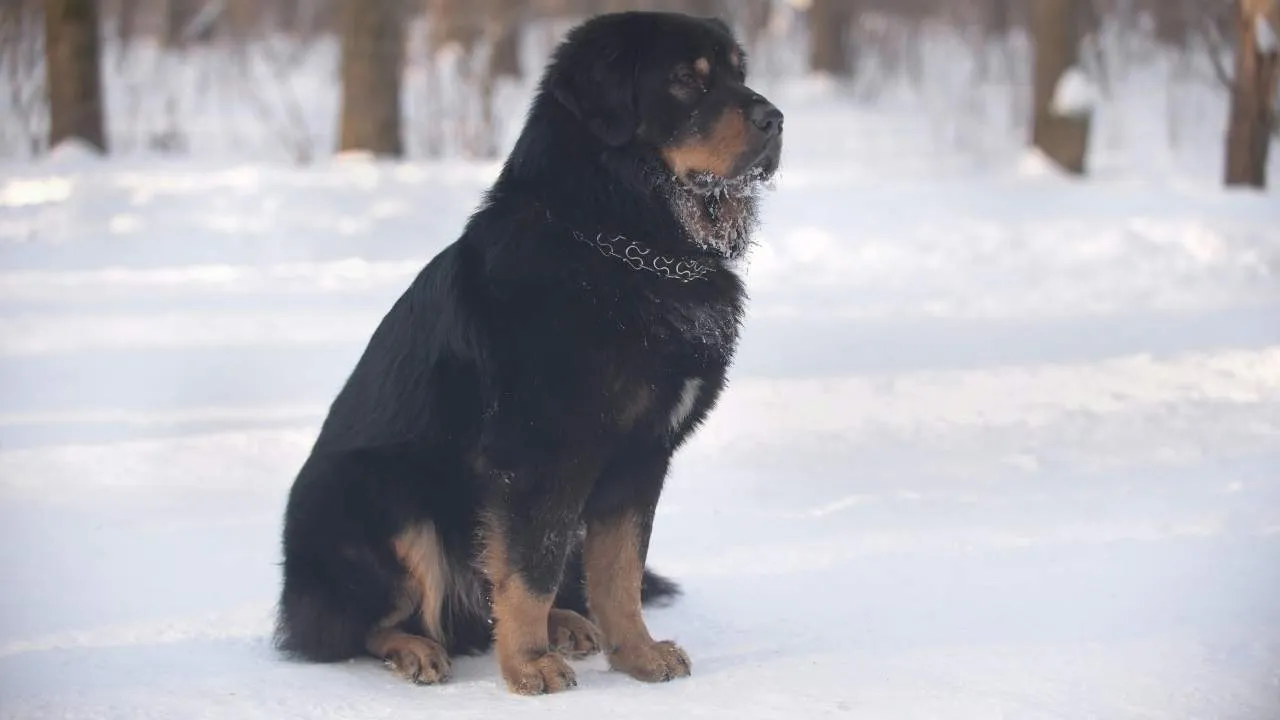
Right off the bat, their lion-like mane gives them a majestic and intimidating look. Their loyalty runs deep, and even the thought that their owner may be uncomfortable makes them go straight into protective mode.
Like many dogs on this list, their aggressive tendencies are linked to their territorial nature, a trait developed from their ancestral role as guardians in the Himalayas, as noted by WebMD.
A need to tackle this from a young age with the correct amount of socialization and mental stimulation is the way to go.
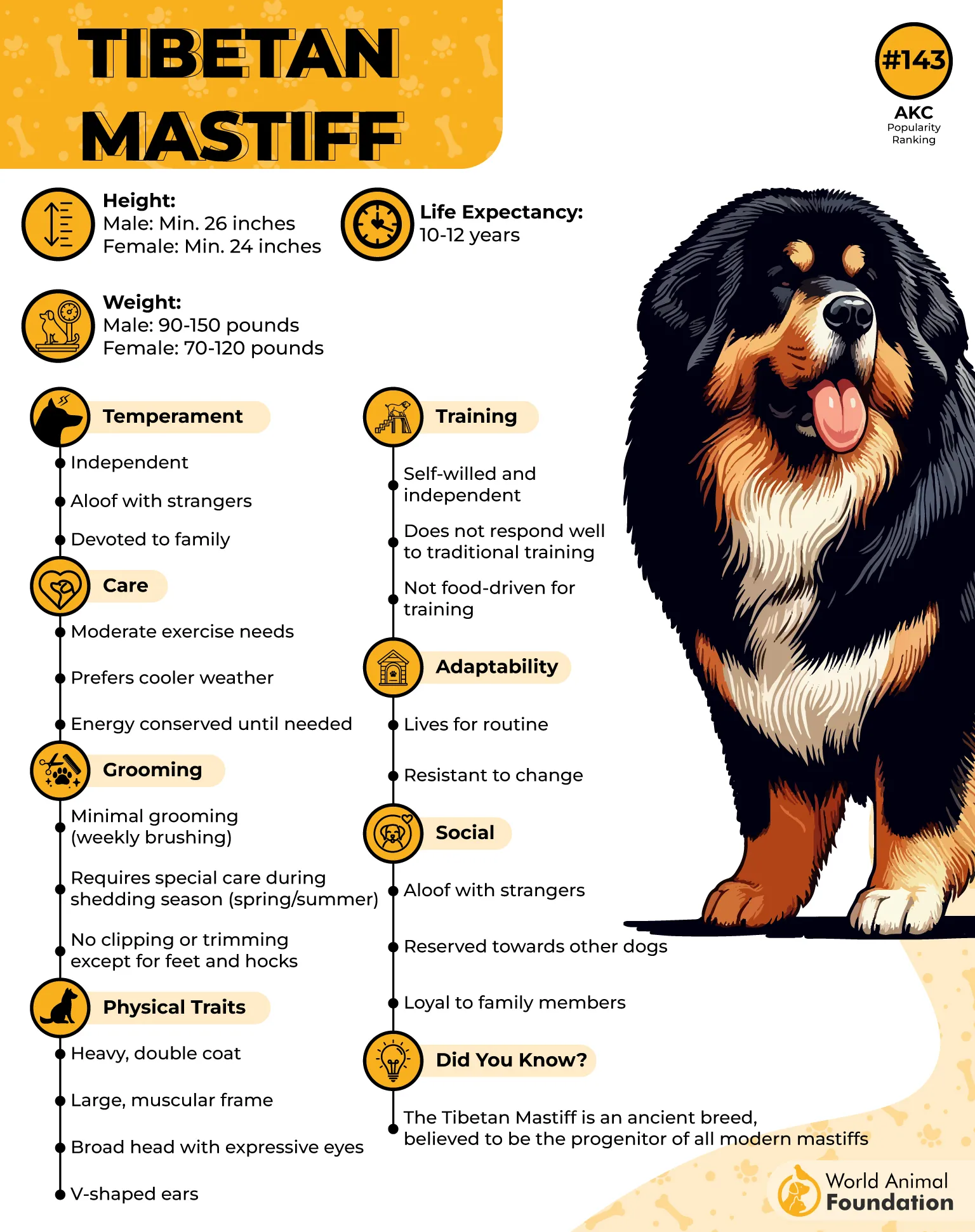
Because they were traditionally nighttime guardians, they are inherently aggressive compared to other animals toward strangers in the dark. There is often no warning in such a case; a bark or a lunge is the defence you can expect. They have ancient guardian instincts.
When raised with patience, consistency, and gentle leadership, this breed becomes a wise, steady protector whose devotion runs as deep as their roots in the mountains they once watched over.
7. Anatolian Shepherd Dog

It is undeniable that an Anatolian Shepherd is a fierce dog that needs an experienced trainer and also early training in order to overcome any behavioral issues in the future.
They may assume they are the protectors, hence the decision-makers, so assuming a calm leadership role with them at an early age is essential for them to be trained in the future.
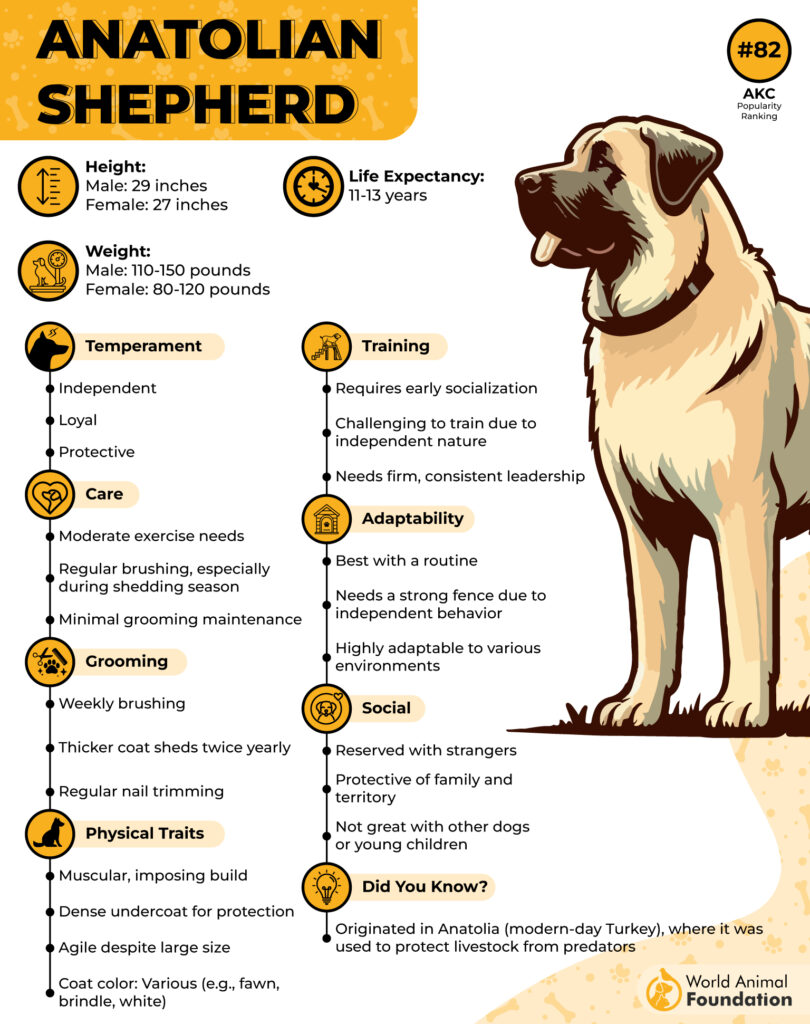
They are super sensitive and have low tolerance for trespassing, even with familiar visitors arriving unannounced. Territorial boundaries are sacred to them. They were bred to work alone in the field as guard dogs.
They are independent and make their own judgments about threats they encounter. So it is likely that they may act before the owner can do something about it.
Conclusion
Specific breeds have specific needs when dealing with fear, aggression, and especially independent dogs. But it’s important to understand that this behavior does not come from an ill intention or malice.
These are highly intelligent dog breeds, but also affectionate family pets. This behavior comes from their genetic background and instincts only, as they’re bred for vigilance, protection, and loyalty. The defensive reactions are simply a byproduct of generations of selective breeding.
The key to dealing with such dogs is positive reinforcement, early socialization, and also setting clear boundaries with strangers and guests in the presence of the dog. It’s a two-way street that can only be crossed with patience. A protective dog only responds to guidance, not to scolding.


